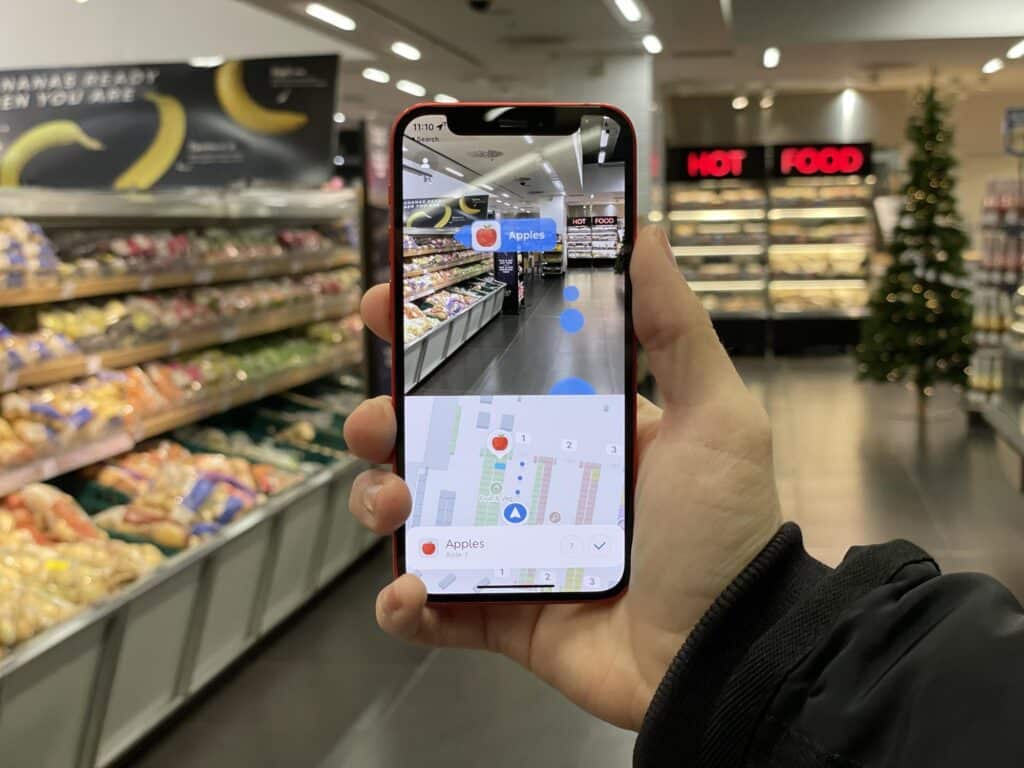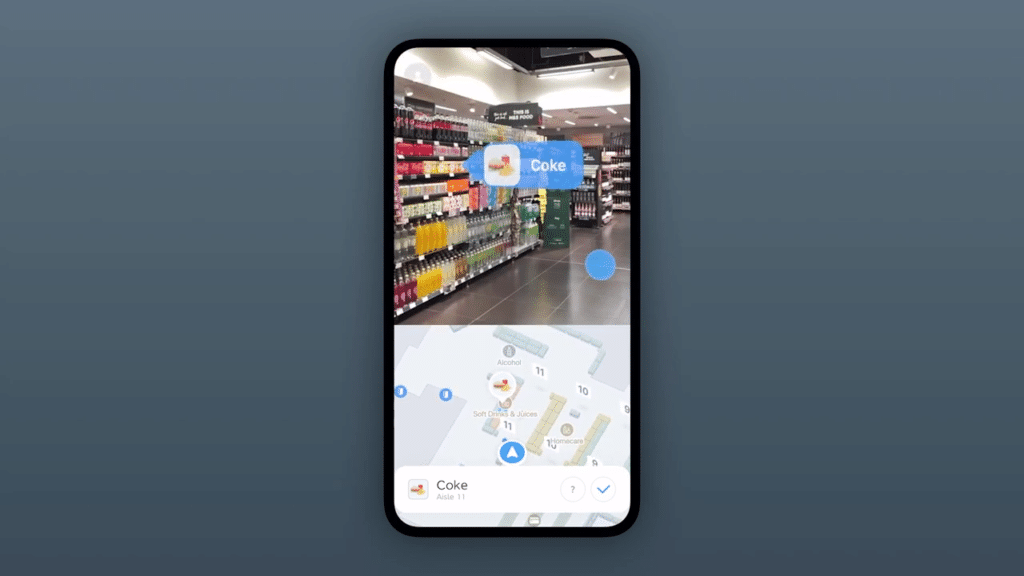When you think of M&S, you wouldn’t typically think of them as a particularly contemporary and innovative company. However, M&S are one of the few retailers embarking on a Metaverse journey through an augmented reality experience.
What is M&S’ Metaverse?
M&S have currently launched a wayfinding app that encapsulates an augmented reality experience, helping workers and shoppers in their supermarket in White City, London. The navigation app allows users to create a digital shopping list and then programmes an optimised route around the store to help find the items with more ease and convenience.
Whilst their app isn’t technically a Metaverse space where users can gather, like Nikeland and CEEK City, it does allow an augmented reality experience where users can utilise their surroundings to form a digital journey.
Developed by AR startup company Dent Reality, the M&S app pinpoints the user’s geographical location and creates a store map using digital planograms. This automatically updates on the app to show the user’s movement, finding their optimised navigation route. As well as being a navigation tool, the app is also developed to give recommendations based on their shopping, such as wine pairings.

Are There Any Challenges?
Being an early adopter of innovative technology, there will of course be some obstacles to overcome to ensure the experience is accessible and easy to use. The M&S app is currently only available on iPhones, and users must connect to the store WiFi for it to work. As a result, it is not yet fully accessible and limits the type and amount of users. It is also only available in one of their large stores in London, although they have said the app is scalable and can be easily adapted to other stores when the time is right.
Some people have their reservations on this app as a customer tool. Some think it over-engineers the customer journey, making the simple process of grocery shopping more complex with no real benefit. Some also think it is unnecessary, unless you are shopping in a huge, unfamiliar store. Combining this with the currently limited accessibility highlights the app as a potentially obsolete innovation.

What Are the Opportunities For the Future?
Despite some critique, the app does highlight a huge opportunity for retail employees, as opposed to customers. Online grocery shops surged in popularity following the Covid-19 lockdown and have continued to be in high demand. It is rare you can visit a supermarket lately without seeing employees pushing around trollies, fulfilling online orders. Having this app in supermarket environments would give employees a huge efficiency advantage, especially if it could distinguish multiple different shopping lists and give one optimised route to fulfill all orders.
There is also a case to argue that it benefits the visually or otherwise impaired, who typically rely on shop workers to help them navigate the store.
Adidas, Walmart and ASOS are other retailers experimenting with augmented reality experiences, showing a distinct opportunity for technical innovation in retail environments. As well as this, in 2019 Sainsbury’s launched an Easter bunny AR campaign, where users would find digital animals around their store. There is a clear opportunity for retailers, but it is yet to be decided who is the real beneficiary – is it customers, with ease of shopping and an element of fun, or is it workers, who find an efficiency advantage through AR?

Despite some criticism, M&S have cemented their new position as an innovative retailer, perhaps shedding their ‘old fashioned retailer’ image. What is clear is that they are experimenting with and leveraging new tech to find innovative ways to improve efficiency and customer journeys.





